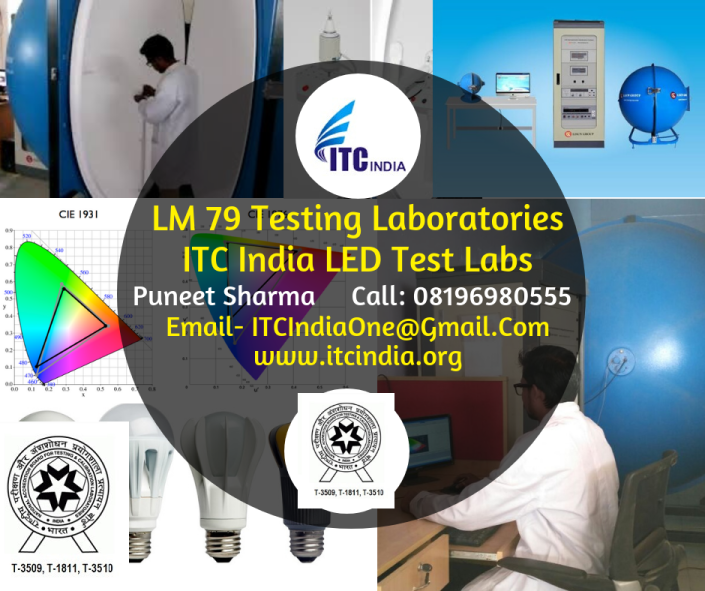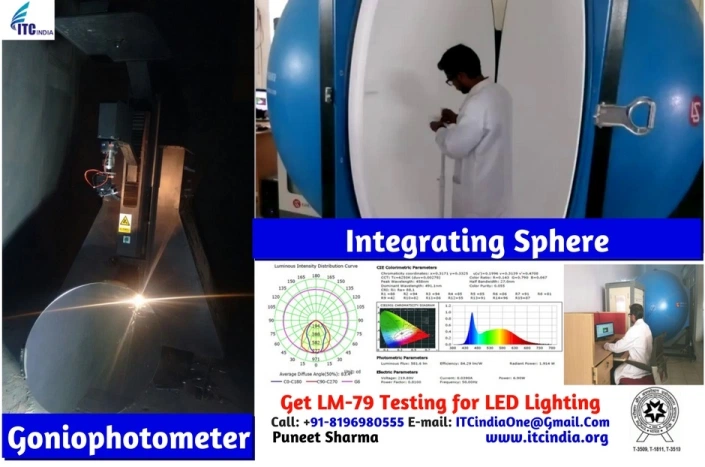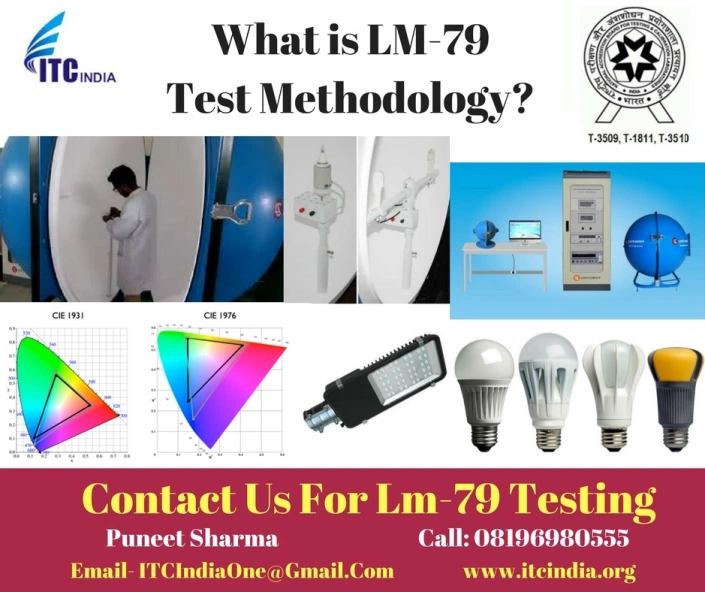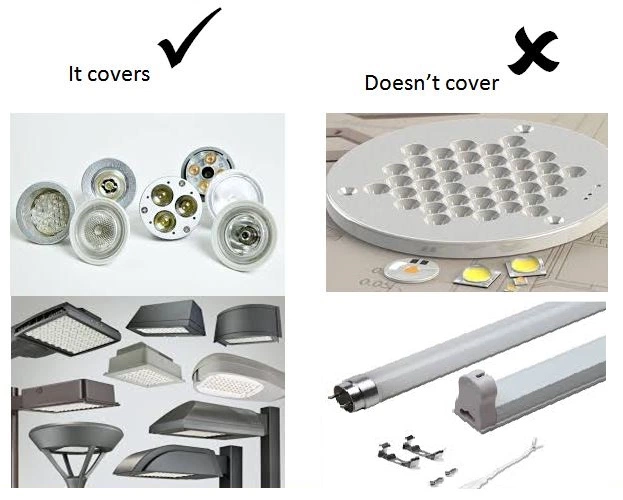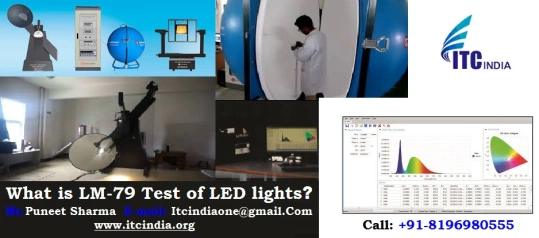lm-80
LM 79 Testing Laboratories – ITC India LED Test Laboratories
LM 79 Testing Lab, LM 79 Test Labs, LM 79 Test Laboratories, LM 79 Testing
Get introduced with the best place which is ITC India for LM-79 Testing Labs where you can have the best result for LM-79 Testing. Call on 08264401091/ 08196980555 for LM-79 Testing laboratories
LM 79 Testing
As the development of LED technology continues to grow and diversify, the need for consistent and standardized testing procedures for LED has become more prevalent than ever. ITC India is a NABL and BIS Accredited testing for LM-79
ITC India has made strides to stay current with the new testing standard LM 79 set forth by the Illuminating Engineering Society of North America. In addition, ITC India testing is now a priority when testing our LED light systems for more reliable results.
LM 79 Testing Laboratories
LM-79 is a method approved for taking electrical and photometric measurements of SSL products. So ITC India Pvt Ltd. is providing you accurate LM-79 testing by experts in the very short period of time. LM-79 covers total flux, light output, electrical power, efficacy, chromaticity, and intensity distribution. The five required metrics on the LED Lighting Facts label come from LM-79 testing Laboratories results.
IES LM-79 Electrical and Photometric Measurements of Solid-State Lighting Products
An approved method describing procedures and precautions in performing reproducible measurements of LEDs:
- Total luminous flux
- Electrical powers
- Luminous Intensity distribution
- Efficacy (lm/watt)
- Chromaticity
What Is LM-79 Testing?
Everyone knows about it, in 2008, the Illuminating Engineering Society published LM 79, Approved Method for the Electrical and Photometric Measurements of SSL Products. LM-79 testing lab capture performance nature of products that feature SSL, including light emitting diodes LEDs.
LM 79 Testing Scope
Applies to LED-based products incorporating control electronics and heat sinks, that is, those devices that require only AC mains power or a DC voltage power supply to operate.
Who can perform testing?
LM 79 testing should be performed by ITC India Laboratory for the category of the product tested. Only reports from recognized laboratories are relevant. This standard is used for the Department Of Energy ENERGY STAR program qualification and lighting facts advocate program. All ITCIndia product testing is performed according to LM 79 in a NABL and BIS recognized laboratory and reports are available upon request.
Why We Use LM-79 Testing Lab?
The LM-79 testing lab provides a snapshot of performance under specified operating conditions at some point in the life of a product, usually, at the beginning of the operation, these are referred to as initial measurements. It never addresses permanent ratings, changing performance over time lumen maintenance, or LED case temperature.
The LM 79 methods are really applicable to integrated LED products, such as luminaries and replacement lamps. It is not applicable to LED packages, modules, or arrays
- LM 79 is the method for testing electrical and photometric measurements of SSL lighting products.
- LM 79 contains procedures for performing reproducible measurements of LED properties, including total flux, electrical power, efficacy, and chromaticity.
- The scope of LM 79 Testing Laboratories applied to LED products that incorporate control electronics and heat sinks. This covers complete LED luminaries and integrated LED sources. It does not include bare LED chips or LED-based products without a light source.
Absolute Photometry Basis
- LM 79 requires complete luminaire testing
- Traditionally, photometric evaluation of lighting products is based on separate tests for lamps and luminaires relative
- For solid-state lighting products, LED lamps typically cannot be separated from their luminaire because of heat effects absolute
What Is Important Aspect Of LM-79 Testing?
LM 79 testing requires complete luminaries testing on an absolute photometric basis. Typically lighting products are evaluated on a relative photometric basis, where separate tests are done for lamps luminaries. However, for SSL products the LED lamps typically cannot be separated from their luminaries. The absolute photometric testing required measures the light distribution and light intensity of the complete luminaries.
In recent times, the term LM 79 Testing laboratories have become part of our lighting lexicon and have been treated in some cases as lighting program all its own. While many lighting programs such as DLC and Energy Star reference LM 79 procedures, it is not in and of itself a lighting program with specified requirements and pass/ fails criteria.
However, the term LM 79 Testing Lab has come to generally be recognized as two distinct tests a candela distribution test with an IES file, and an integrating sphere test for a standard color CCT, CRI, Duv, chromaticity coordinates. Nevertheless, any time LM 79 is mentioned in reference to the desired testing, our staff will verify exactly what the customer requires since many measurement options are discussed in the official document.
Relative vs. Absolute Photometry
Relative testing Lamps of interest and luminaire with reference lamp are measured separately. Then the actual light distribution and intensity of the complete luminaire of interest is derived by normalization of the test data
Absolute testing The actual light distribution and intensity of the luminaire of interest are measured directly from the complete luminaire.
Why choose ITC?
We, ITC India providing service to the client from the last 8 years with 100 % satisfied clients. Being NABL accredited, it is equipped with highly accurate machines, experienced and competent engineers. Customer satisfaction is the quality policy of the company. So, we are here to serve the clients in their testing requirements.
- Reasonable Price: Very competitive price, being one of the best on the market. Moreover, this price has no hidden fees.
- The quality of our support is unmatched: We take to support one step further by tailoring our replies to suit your knowledge, expectations, and personality.
- We’re passionate about what we do: What sets us apart from the competition is that we’re passionate about the services we provide and quality of support.
- Proven track record: We’ve gained a reputation as a reliable and honest company in the last 7 years with most of our customers coming from reference.
If Your Buyers Demanding for Street Light Testing – Contact Now!
Kindly send us the following Details, So that we can provide you with a quotation for the same:
- Product Name, Technical Specifications, and Brochure
- Product Images
- Total Number of Samples Required: 2
